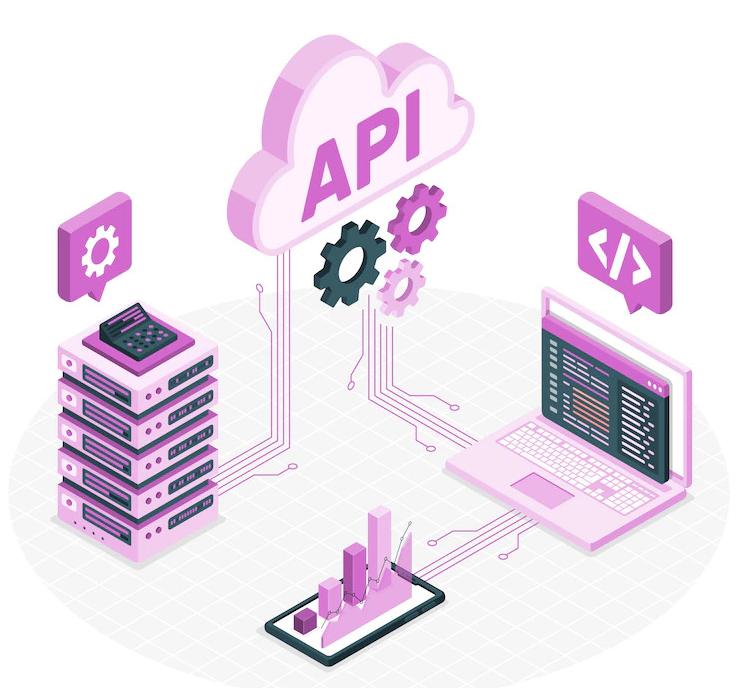There is no question anymore about whether and how much data one should use for business research and related activities. The answer is yes and as much as possible. The challenging question is how to prevent data from decaying and becoming useless before you get the chance to put it into action. The way to meet this challenge is by looking at the technology that wastes no time to deliver the data to you. Real-time API is just such a solution that is and will keep working as an antidote to data decay.
What is a real-time API?
Let us look first at the coded part of real-time API. The acronym API stands for an application programming interface. Generally speaking, it provides an interface allowing two or more computer programs to communicate with each other.
API is sort of a middleman or a messenger that gets other applications connected with each other and builds a bridge through which they can share information. Thus, two devices or apps that are otherwise separate from each other can come into a kind of data-sharing network through the use of an API. The programs do not need to be connected in any other way, as the API will do the job of bringing the data from one place to another.
Now for the really neat part of the concept of a real-time API. Real-time means that the API can deliver the data to you almost immediately. Literally as close to real-time as it is currently technologically possible.
Therefore, once the data is produced and made available in some resource, you can use a real-time API to get it and be sure that soon enough, it will be delivered to you. The process would usually start with you specifying the URLs of the data resource through the API. Then you would get a job ID that you will use to check when it is done. Once the data extraction is completed, you would receive it in one of the popular and accessible formats, for example, as an HTML document.
Data decay challenges
Now for the problem that such technology as real-time API is meant to solve. Data decay refers to the process of data quality deteriorating over time. This process touches all the data sets that you might have in your databases.
Data degradation can be caused or accelerated by many factors. Data management errors, the constant moving of data from one resource to another, and poor tools used to work on it can all add to the rates of data decay. However, the main problem is simply the fact that your data will get outdated even and especially if you do nothing with it. Information ages, and what was once correct and useful will soon be no longer accurate.
As such, data degradation is unavoidable. Luckily, by using such technological solutions as real-time API, you can remedy the negative effects of data decay.
Regenerating data quality
The way a real-time API can help to meet the challenges of data decay is quite straightforward and simple to grasp. The sooner you get the new data, the more time you have before it diminishes in value.
Thus, the first objective is always to get the data fresh out of the oven. Once particular resources update and produce new data points that interest you, real-time API is ready to fetch them for you. This way, you have plenty of time to do with the data everything you want while it is still up-to-date and of high quality.
In addition, real-time API can be used to update the data sets that you already have. Data enrichment and other processes that integrate new third-party data with the data sets that you already have is the best way to regenerate data quality. Fresh data points will fill in the gaps in the information you have and correct the errors that were created through decay or may even have been there all along.
Real-time API is among the top technology to get your data enriched, and its quality boosted efficiently. Using it gives your data sets a new lifecycle which once again brings value to your company.
Ryan Beford
Latest posts by Ryan Beford (see all)
- Real-Time API: The Technological Solution to the Data Decay Challenges - December 16, 2022
- The Modern Rules Of Email Signature - July 4, 2022
- Top 7 Questions You Need to Answer Satisfactorily During an Educational Event - June 8, 2022





